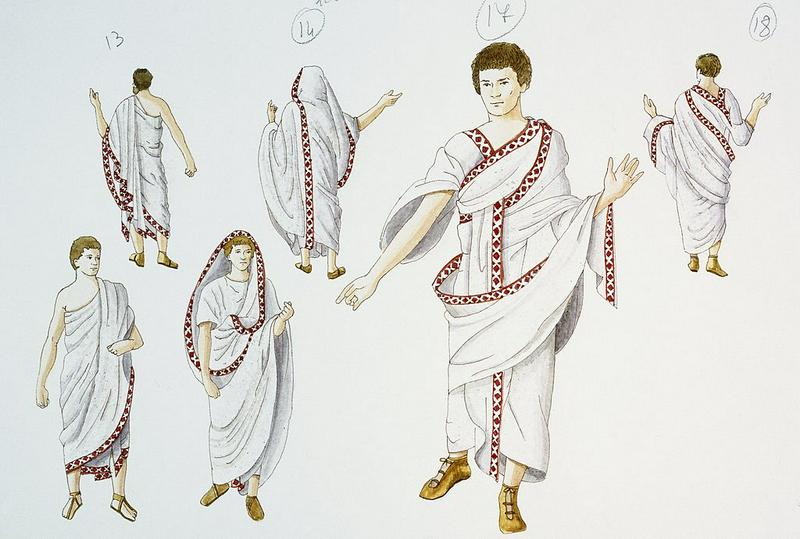The Roman Toga: A Status Symbol That Was Key In Elections And Gave Us The Word "Candidate"
By | November 5, 2020

Today, the Roman toga is mostly associated with frat parties, but the simple yet sophisticated garment belies a complex history. Everything from politics to identity to agriculture, much like Roman bodies, could be wrapped up in a single sheet.
The Roman Toga
Roman culture was greatly influenced by Ancient Greece and Etruria. Both men and women in Ancient Greece wore a garment made from a single sheet of fabric draped around their bodies and held in place with pins and ties, but it was generally worn by the working class, while the Etruscans wore a simpler, shorter version of the Roman toga called a tebenna that likewise held no social significance. Romans derived the name "toga" from a term associated with Roman royalty, travea, and eventually referred to themselves as the togati, meaning "the people of the toga."
Modern partygoers usually fashion their togas from bedsheets, but ancient togas were made of sheets of wool about 18 or 19 feet long and 10 feet wide that were cut in a semicircle so they could be wrapped around the body and held in place without buttons, snaps, or pins. Of course, the finer the material, the wealthier the wearer. Even the way the toga was draped gave onlookers clues about the wealth, power, and status of the wearer.
Most togas were off-white colors, but certain embellishments denoted privileged positions—for example, members of the Roman Senate identified themselves by a purple stripe. While they ran for office, however, Romans wore togas that were bleached with sulfur until they were bright white so they could stand out from the crowd. Such a toga was known as a toga candida ("white toga"), and it's the origin of the modern word "candidate."

Under The Toga
What did Romans wear under their togas? It wasn't boxers or briefs. That's right: The senators of Rome and the wealthy elite went commando under their togas. It's not that underwear wasn't a thing in ancient Rome—artwork featuring Roman gladiators, athletes, slaves, and common laborers depicts a loincloth-like garment called a subligaculum around their midsections—but it was the domain of the lower class and closer to a modern-day jock strap than what we would think of as underwear.
That means togas could get a bit drafty, even in the balmy climate of ancient Rome, which experienced its share of occasional cold snaps. Fortunately, provisions could be made. Roman historian Suetonius wrote that Emperor Augustus once had to wear four tunics, a woolen chest protector, an undershirt, thick socks, and wraps for his legs under a thick toga to stay warm.

The Death Of The Toga
The popular image of ancient Rome would be incomplete without every man, woman, and child in a toga, but only male citizens of the elite class wore them. Lower-class men, especially soldiers, shirked the toga in favor of attire that gave them more range of motion because it's really hard to toil in the fields, let alone fight on a battlefield, in a delicately draped bolt of wool.
In fact, their impracticality is a large part of why ancient Romans grew tired of struggling to correctly don their togas. They were also costly to produce and difficult to keep clean, so they were eventually cast aside in favor of tunics and mantles, which remained popular through the end of the medieval era.

